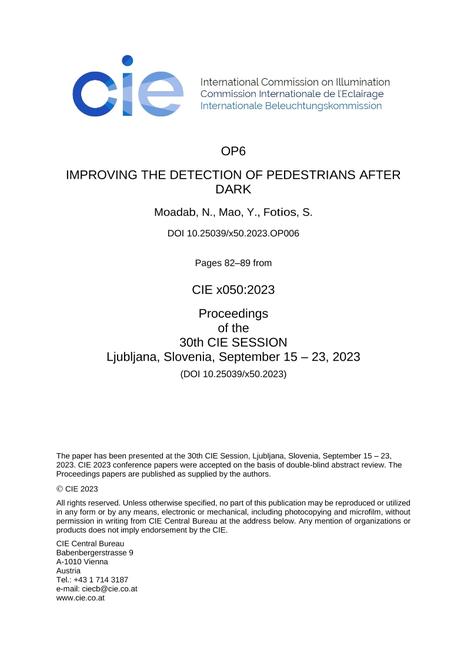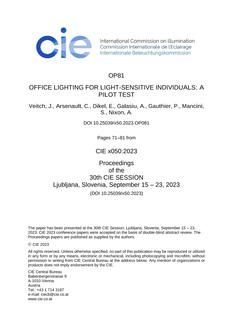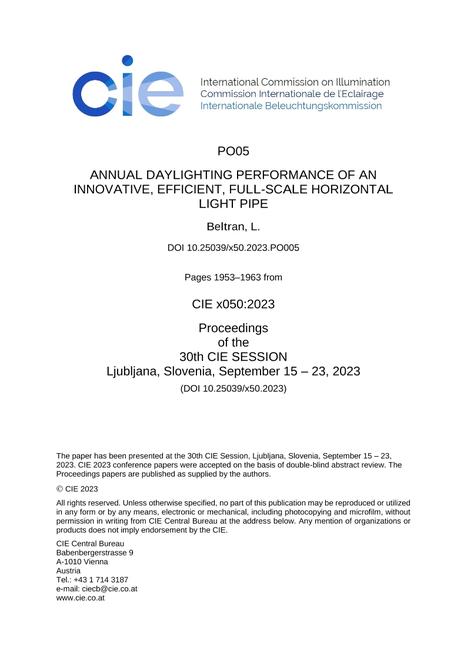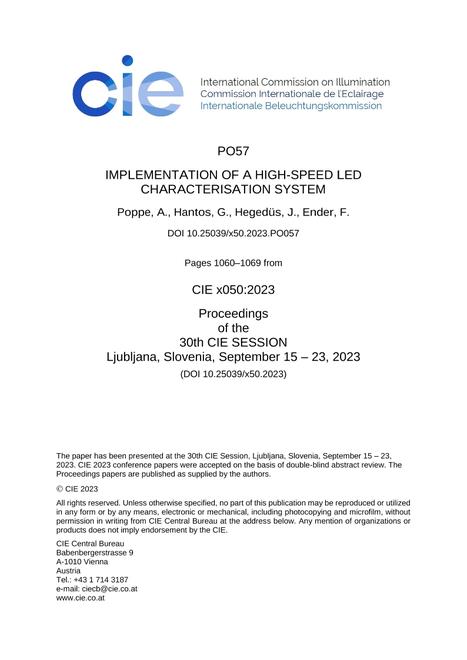-
-
Available Formats
- Availability
- Priced From ( in USD )
-
Available Formats
-
- Secure PDF 🔒
- Immediate download
- Free Download
- Log in to download
Customers Who Bought This Also Bought
-

CIE x050-OP006
Priced From $37.10 -

CIE x050-OP081
Priced From $38.15 -

CIE x050-PO005
Priced From $38.15 -

CIE x050-PO057
Priced From $38.15
About This Item
Full Description
Emotions are important for well-being, co-operation and work performance in an office environment, and the relationship between light and emotions has been emphasized in previous research. Using a mixed-methods approach with a combination of survey and qualitative interviews with employees and technical measurements, this study investigated what emotions and experiences were associated with the illumination in an open plan office in Sweden where indications of dissatisfaction with light had been reported. The purpose was to better understand emotional associations to light and suggest a process to improve them. Technical measurements showed CRI >80 and 500 lux in the landscape, and the survey and interviews suggested the office illumination was on average perceived to be rather unemotional, uniform and flat, and not so energy-rich. Emotions associated to the light were also entangled with other factors than the light itself. A process for investigating and improving office illumination is suggested.
There is an increased focus on energy efficiency in offices today. Energy is for example saved by sharing office spaces in open plan layout but also by using energy efficient light solutions. Light solutions and automatic systems such as occupancy control and spectral tuning can contribute to energy efficiency but should be adapted to user needs (deBakker, et al., 2018; deBakker, et al., 2019). Since there is much research suggesting an interplay between emotions and different light conditions (e.g., Chen, et al., 2021; Kombiez & Dietl, 2019; Lauren, et al., 2022; Zhang, et al., 2023; Nir, et al., 2018) there is an increasing need to investigate how well the subjective emotional experience of light in the office satisfies the user as well as the environmental performance of the building. The aim of this paper is to examine how employees (meaning users) describe and experience the light at their workplace in terms of emotions. Departing from this understanding, a second aim is to suggest how the office illumination may be improved by including the users’ perspectives in the design and decision-making process for the office. Because of the limitations of the format of this paper, each section is summarized and described rather briefly.






